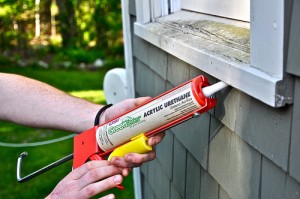 Sometime during your crusade to seal those energy robbing cracks and holes in your home, you're bound to start asking yourself, "Isn't air flow important for a healthy home? Can I take this whole thing to the extreme?"
Sometime during your crusade to seal those energy robbing cracks and holes in your home, you're bound to start asking yourself, "Isn't air flow important for a healthy home? Can I take this whole thing to the extreme?"
The answer is yes. But probably not.
The EPA recommends a rate of .35 ACH (natural air changes per hour — that is, just over 1/3 of the air in your home being replaced every hour; or 3 hours for a full air change) for healthy indoor air quality. The average home has a much higher rate of natural air infiltration, and an older, leakier home will probably exceed this standard even after significant air sealing efforts.
But a leaky home provides no assurance that indoor air pollutants like dust and mold will be properly eradicated: during periods of calm weather with no wind, for example, air can sit stagnant in a leaky home for days. On the other hand, during a windy day in the winter, a leaky home effectually needs to be re-heated from scratch every few hours, which is a waste of both energy and money. The best way to ensure that a home is healthy, safe, and energy efficient is to air seal the home as well as possible, and to pair air sealing efforts with increased mechanical ventilation to make sure that air cycles in and out of the house at a healthy and consistent rate. The mantra is "seal tight, and ventilate right."
